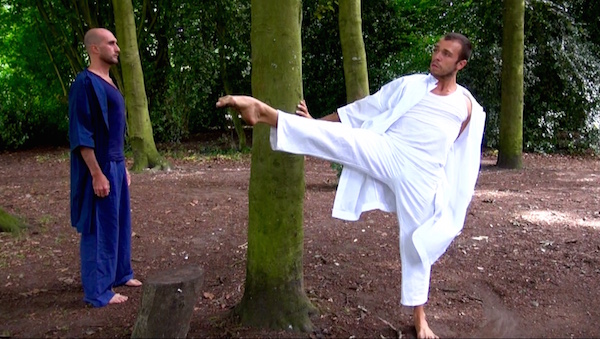For Italian version please scroll down
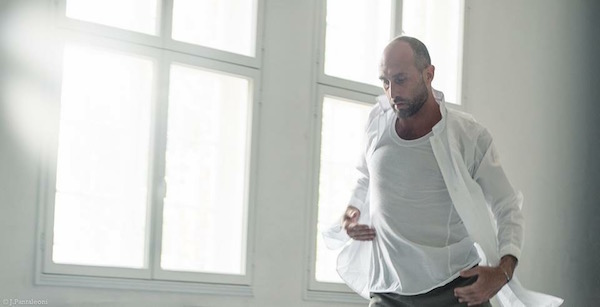
Foto: J.Pantaleoni
Dance is my great passion. But tenacity, the spirit of sacrifice and a lot of determination are not enough to be able to stand on stage and perform. For those who have spent most of their lives in a studio, trying to overcome their physical limitations with hard work and lots of sweat, continually memorizing new steps, handling different styles, moving to rhythms and music ranging from Adagio to Hip Hop, know how difficult it is to get into a dance company, pass the audition to participate in a show or to stage their own work. When I moved to Berlin, although I had abandoned my lawyer’s robes – which I had worn, in particular, for economic reasons, at the expense of my activities as a dancer -, I couldn’t dedicate myself to dance as I wanted to. As had already happened in Italy, the need to earn money partially changed my priorities, so I started to teach Pilates, and in spite of myself, I assigned dance to the sphere of the „unrealistic dreams“.
However, as I have already seen in this city where I live, it’s not so unusual that something unexpected can happen. Berlin is a place where people pass through, energy, culture and art, so it is not uncommon to meet someone and suddenly find yourself involved in interesting situations.
In keeping with this trend, through a mutual acquaintance, I was put in touch with Daniela Lucato, a brilliant filmmaker who was looking for dancers for a project.Her idea was, through dance, to tell the stories of some refugees who now live in Germany and then make a short film / documentary about it. After a couple of meetings, in order to get to know each other’s work, but mostly to show her my ability, through body language, to recreate the same insinuations and feelings provoked by the story of one of the refugees who was interviewed by Daniela, I became part of the Connecting Fingers cast.
That’s how I got the opportunity to dance at the Theatre Inglese Berlin: once again on stage, once again in front of an audience, this time a foreign audience.
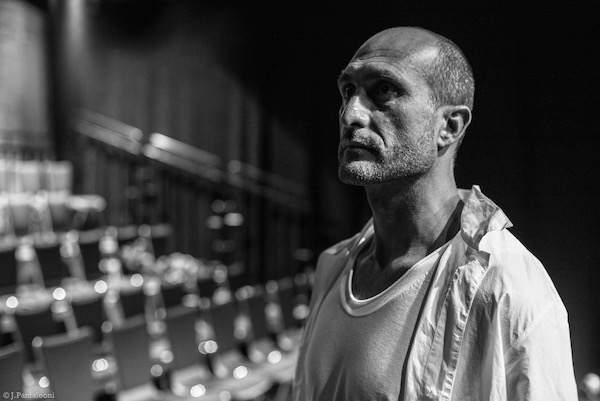
Foto: J.Pantaleoni
The choreography – curated by Alessio Trevisani – was powerful, direct, expressive, but not didactic.
The set design – apart from a few items with strong symbolic meaning – was deliberately sparse. Also the lights were pivotal. In contrast, the costumes, kindly supplied by the owner of the fashion house Labo.Art Ludovica Diligu, (another successful meeting in Berlin through my Pilates activity), were full of character, so as to contribute significantly to the dramaturgy of the show. There were four items of clothing in strong colours and that had clean lines which spoke of ordinary people, real, with a past made up of normal things, not dancers. Costumes that caught the viewer’s attention, wihtout distancing them from the dancing protagonists of the four stories. The audience was involved and brought into the dramatic tales, which were performed with respect and empathy, which were necessary to internalize and to transform the tales into dance. Connecting fingers was an experience filled with emotions, and it is a promising ongoing project which will keep me busy for several months to come.
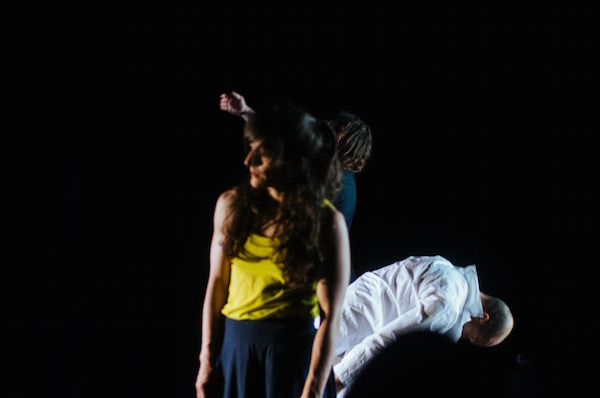
But it was not the only surprise during this period … As often occurs, you simply need to start one thing in order to trigger a mechanism whereby another thing immediately follows. Whilst I was rehearsing for the show, I was in fact offered an unmissable and exceptional opportunity: to shoot a dance video. The idea, originally by Prof. Francesco De Sio Lazzari – religious historian, writer, art lover and lover of dance – was inspired by two texts, both very intense: the first, by Plutarch, which describes the moment of death; the second, engraved on a gold foil discovered in 1969 in Ipponio (now Vibo Valentia), which contains directions to the Afterlife. The video was supposed to represent these moments through two dancers and two different choreographic moments, to be tied in a harmonious synthesis and to be touching. An ambitious challenge, which I never could have refused.
My friend David Cocchiara (who was named best dancer in Holland in 2014), was my guest here in Berlin when we got the call that got us involved in the project. After having spoken at length about the texts in order to find the right inspiration and to decide how to represent the feeling of anxiety and fear before death and the tumultuous and unknown journey to the Afterlife, we had to choose the most expressive music, the costumes and the most suitable locations to best recreate the atmosphere that corresponded to the two different interpretations. For music, after a lot of hesitation and second thoughts, we opted for the Four Seasons by Vivaldi, a composer loved by us all. For the first part, the one previous to death, that was interpreted by myself, we used the third movement of Winter, and for the second part, in which David made the journey to the Afterlife, the third movement of Summer. The costumes, particularly suited to dance in their fit and their sophisticated simplicity, were by Labo.Art, even on this occasion. Our two outfits/looks were the same – baggy pants, tank top linen gown open at the front and knee-length – but of different colors, one blue, one white. Clothes, geometries and volumes ideal for shooting the video and perfect to perform spacious and airy movements, again designed by the creative Ludovica Diligu. The location: Amsterdam. Specifically, a semi-abandoned building in which to dance Plutarch’s work, and the Vondelpark to represent the text displayed on the foil of Ipponio.
Under the skilfull direction of Boris Schreurs (the director of the video) another incredible and entirely new expereince began for me.
Working on a video is completely different from doing a dance performance on stage. Each choreography, as well as each transition between one scene and another, must be repeated numerous times to allow multiple-camera positions and shots from different distances. Surprisingly, and in contrast to what one might expect, the repetition of the steps does not lend itself to automatic movements, but instead favors a deeper immersion into the workpiece and a more thorough exploration of gesticular precision (as my father would say: repetita iuvant). The result: a video called
“The Outsider as Insider”
These experiences are possible because I live in a city able to relate people, to create synergies, to promote Art.
Somehow, I feel like I am in the centre of Europe, in the city where things are happening, a sort of new Weimar Republic. (The Philosopher Ernst Bloch once colled the Weimar Republic the new “Age of Pericles”).
Now, when I pass through the streets of Schöneberg on my bike, when I sit in a cafe at SchlesischesTor, or when I’m on the U-bahn, I like to think that amongst the people around me there could be the new C. Isherwood, WH Auden, S. Spender, or that through the German guys that I know, I could meet the new Erika and Klaus Mann, I like to think that Roses is the new Eldorado and a person singing on Warschauer Bridge is a future Marlene Dietrich.
Berlin is now not only the capital of the whole of Germany, a country finally united; it is also the central pulse of the most diverse cultural experiences, just as it was as during the time of the Weimar Republic (1919-1933): an experience that quickly became a fascinating myth, a time which was short-lived but fierce, splendid though always destined to come to an end. Peter Gay dedicated a volume to the Weimar culture in the 1968 called “the Outsider as Insider”, which illustrates this particular sentiment. Gay once used the following words to describe the Weimar era: “it was a precarious glory, a dance on the edge of a volcano”. Nowadays German democracy is extremely strong. It is not only defined by freedom and widespread prosperity, but also culture!
Italian version
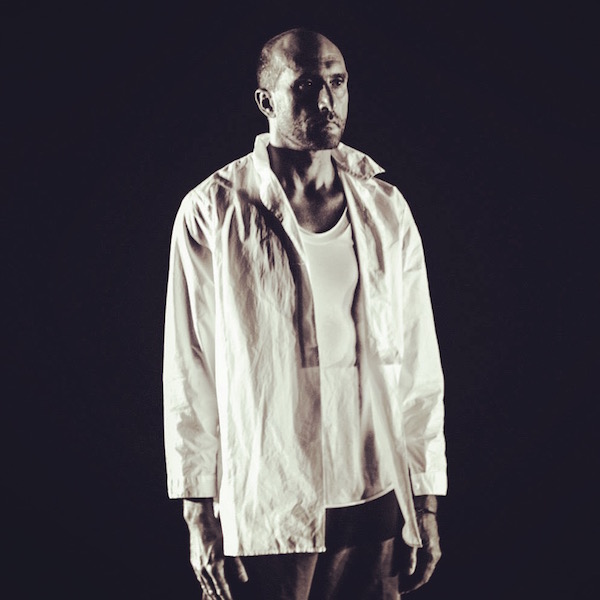
La danza è la mia grande passione. Ma non bastano tenacia, spirito di sacrificio e tanta determinazione per riuscire a salire su un palco ed esibirsi. Chi ha passato parte della propria vita in una sala, cercando di superare i propri limiti fisici con un duro lavoro e tanto sudore, memorizzando passi sempre nuovi, confrontandosi con diversi stili, muovendosi su ritmi e tempi musicali che variano dall’adagio all’hip-hop, sa bene come sia difficile riuscire a entrare in un corpo di ballo, superare l’audizione per partecipare a uno spettacolo o mettere in scena un proprio lavoro.
Quando mi sono trasferito a Berlino, sebbene avessi dismesso la toga di avvocato – indossata, per ragioni soprattutto economiche, a scapito della mia attività di danzatore -, non ho potuto dedicarmi alla danza come avrei voluto. Così come mi era già accaduto in Italia, la necessità di guadagnare, ha parzialmente cambiato l’ordine delle mie priorità, e quindi ho iniziato a insegnare Pilates collocando la danza, mio malgrado, nella sfera dei “sogni velleitari”.
Ma, come già ho avuto modo di constatare, dove vivo è facile che ti capiti qualcosa d’inaspettato. Berlino è un luogo in cui transitano persone, energie, cultura e arte, e non è raro conoscere qualcuno e trovarsi improvvisamente coinvolti in situazioni interessanti.
In sintonia con questa tendenza, tramite una conoscenza comune, sono stato messo in contatto con Daniela Lucato, una brillante regista alla ricerca di danzatori per un progetto. La sua idea era di raccontare attraverso la danza le storie di alcuni rifugiati ospiti di campi profughi in Germania e poi farne anche un cortometraggio/documentario.
A seguito di un paio di incontri per conoscere i rispettivi lavori, ma principalmente per mostrarle la mia capacità di ricreare con il linguaggio del corpo le stesse suggestioni e sentimenti provocati dal racconto di uno dei rifugiati che Daniela aveva intervistato, sono entrato a far parte del suo cast per Connecting Fingers.
È così che ho avuto l’opportunità di danzare presso l’English Theatre di Berlino: ancora una volta su di un palco, ancora una volta di fronte a un pubblico, questa volta straniero.
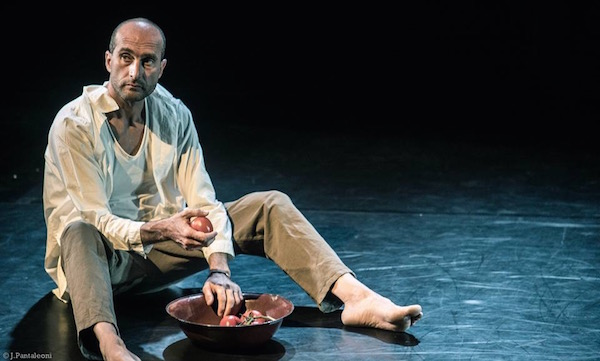
Foto: J.Pantaleoni
Le coreografie – curate da Alessio Trevisani – erano potenti, dirette, espressive, ma non didascaliche. La scenografia, a parte alcuni oggetti con un forte significato simbolico, era volutamente scarna. Anche le luci erano essenziali.
Al contrario, i costumi, gentilmente forniti dalla titolare della casa di moda Labo.Art Ludovica Diligu, altro felice incontro berlinese favorito dalla mia attività di istruttore di Pilates, erano pieni di carattere, tanto da contribuire in modo importante alla drammaturgia dello spettacolo. Erano quattro abiti dai colori decisi e dalle linee essenziali che parlavano di persone comuni, reali, con un passato fatto di cose normali, non danzatori. Costumi che colpivano l’attenzione dello spettatore, ma non lo allontanavano dai protagonisti danzanti delle quattro storie.
Il pubblico veniva coinvolto e portato dentro i drammatici racconti esibiti con il rispetto e con l’empatia necessari per interiorizzarli e trasformarli in danza.
Connecting fingers è stata un’esperienza ricca di emozioni, ed è un promettente progetto in divenire che mi vedrà impegnato ancora per diversi mesi.
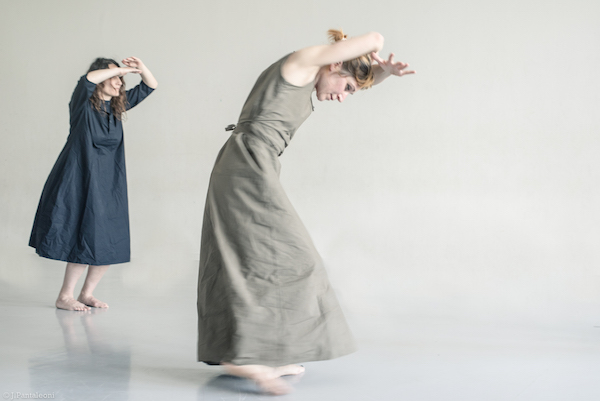
Foto: J.Pantaleoni
Ma non è stata l’unica sorpresa di questo periodo… Come spesso accade, basta iniziare qualcosa affinché si inneschi un meccanismo per cui subito segua qualche altra cosa. Nello stesso periodo in cui facevo le prove per lo spettacolo, infatti, mi è stata offerta un’occasione imperdibile ed eccezionale: girare un video di danza.
L’idea, nata dal Prof. Francesco De Sio Lazzari – storico delle religioni, scrittore, appassionato d’arte e cultore della danza –, è stata ispirata da due testi molto intensi: il primo, di Plutarco, in cui è descritto il momento della morte; il secondo, inciso su di una laminetta d’oro scoperta nel 1969 a Ipponio (l’attuale Vibo Valentia), che contiene le indicazioni per raggiungere l’aldilà.
Il video avrebbe dovuto rappresentare questi due momenti attraverso due danzatori e due diversi momenti coreografici, da legare in una sintesi armoniosa. Una sfida ambiziosa, che non avrei mai potuto rifiutare.
Il mio amico Davide Cocchiara (nel 2014 nominato miglior danzatore in Olanda) era mio ospite qui a Berlino quando abbiamo ricevuto la telefonata che ci ha coinvolto in questa impresa.
Dopo aver lungamente parlato dei testi per trovare la giusta ispirazione e decidere come rappresentare il sentimento di angoscia e di paura che precede la morte e quello tumultuoso e pieno d’incognite del viaggio verso l’aldilà, c’erano da scegliere la musica più suggestiva, i costumi più adatti e le locations migliori per ricreare le atmosfere corrispondenti alle due diverse interpretazioni.
Per la musica, dopo molte indecisioni e ripensamenti, si è optato per le Quattro stagioni di Vivaldi, compositore amato da tutti noi. Per la prima parte, quella precedente la morte, che sarebbe stata interpretata da me, abbiamo usato il III movimento dell’Inverno, e per la seconda parte, quella in cui Davide avrebbe compiuto il percorso verso nell’aldilà, il III movimento dell’Estate.
I costumi, adattissimi alla danza per la vestibilità e la loro sofisticata semplicità, anche in quest’occasione erano della Labo.Art.
Due mise uguali – pantaloni larghi, canotta di lino, camicione aperto sul davanti e lungo sino alle ginocchia – ma di diverso colore, una blu, l’altra bianca. Abiti dalle geometrie e dai volumi ideali per le riprese video e perfetti per eseguire movimenti ampi e ariosi, ancora una volta disegnati dalla creativa Ludovica Diligu.
Come location: Amsterdam. In particolare un edificio semi abbandonato per danzare il testo di Plutarco, e il Vondelpark per rappresentare il testo riportato sulla laminetta di Ipponio.
Sotto l’abile direzione di Boris Schreurs, regista del video, è iniziata un’altra incredibile avventura per me del tutto nuova.
Il lavoro per il video è completamente diverso da quello per un’esibizione di danza su un palcoscenico.
Ogni coreografia, così come ogni passaggio tra una scena e l’altra, va ripetuto numerose volte per consentire molteplici riprese da differenti posizioni e da diverse distanze.
La sorpresa è che, contrariamente a quanto ci si potrebbe aspettare, la ripetizione dei passi non tende a un automatismo dei movimenti, bensì favorisce una più profonda compenetrazione nel pezzo e una ricerca più minuziosa della precisione gestuale (come direbbe mio padre: repetita iuvant).
Il risultato è un video Figli di Terra e di Cielo Stellato dal forte impatto emotivo in cui sentimenti tristi e dolorosi si mescolano a sentimenti di speranza e leggerezza, in cui si oscilla tra il fenomenico e il noumenico, tra l’essere e il non essere.
Un video che passa dai toni scuri e dall’atmosfera angosciante, preludio della morte, alla luce e all’energia salvifica che conduce verso un luogo aldilà della vita.
Un video in cui la danza si spoglia dai virtuosismi e dai tecnicismi fini a se stessi, diventando un vero e proprio linguaggio espressivo alternativo, capace di una forma di comunicazione profonda attraverso il corpo e i suoi movimenti.
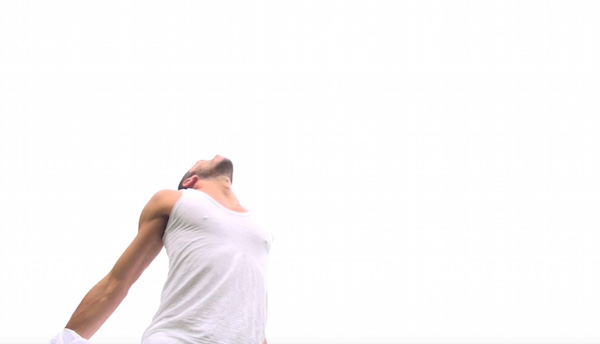
“The Outsider as Insider”
Queste esperienze, sono possibili perché vivo in una città capace di mettere in relazione le persone, di creare sinergie, di promuovere arte.
In qualche modo mi sento al centro dell’Europa, nella città in cui accadono le cose, una sorta di nuova Repubblica di Weimar. (Dell’antica, il filosofo Ernst Bloch ha potuto dire che quel periodo fu come una nuova „età di Pericle“.)
Ora, mentre percorro le strade di Schöneberg sulla mia bicicletta, quando siedo in un caffè a SchlesischesTor, oppure sono sulla U-bahn, mi piace pensare che tra le persone intorno a me ci siano i nuovi C. Isherwood, W. H. Auden, S. Spender, che tra i ragazzi tedeschi possa incontrare Erika o Klaus Mann, che il Roses sia il nuovo Eldorado e che a cantare sul ponte di Warschauer sia una futura Marlene Dietrich.
Berlino è ora non soltanto la capitale di tutta la Germania, della Germania finalmente unita. È anche il centro pulsante delle più svariate esperienze culturali, come al tempo della repubblica di Weimar (1919-1933): un’esperienza che divenne rapidamente un mito affascinante, un momento breve ma ardente, splendido anche se destinato alla fine.
Si pensi al volume che a La cultura di Weimar dedicò Peter Gay (prima ed. italiana nel 1978, ma il libro, in lingua originale, è del 1968).
Se di Weimar, P. Gay ha potuto dire che „fu una gloria precaria, una danza sulla bocca di un vulcano“, ora la democrazia tedesca è una realtà estremamente forte: non soltanto libertà e benessere diffuso. È anche cultura!

